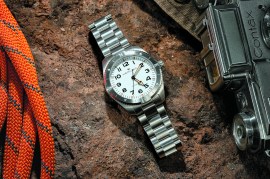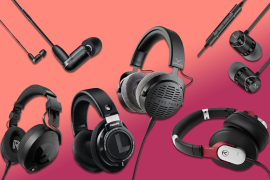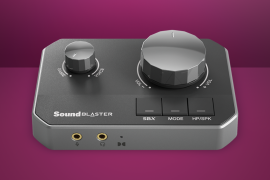Google Pixel 8a review: unbeatable value
Google’s latest budget smartphone is one of its most accomplished – find out why you should buy it in Stuff’s Pixel 8a review
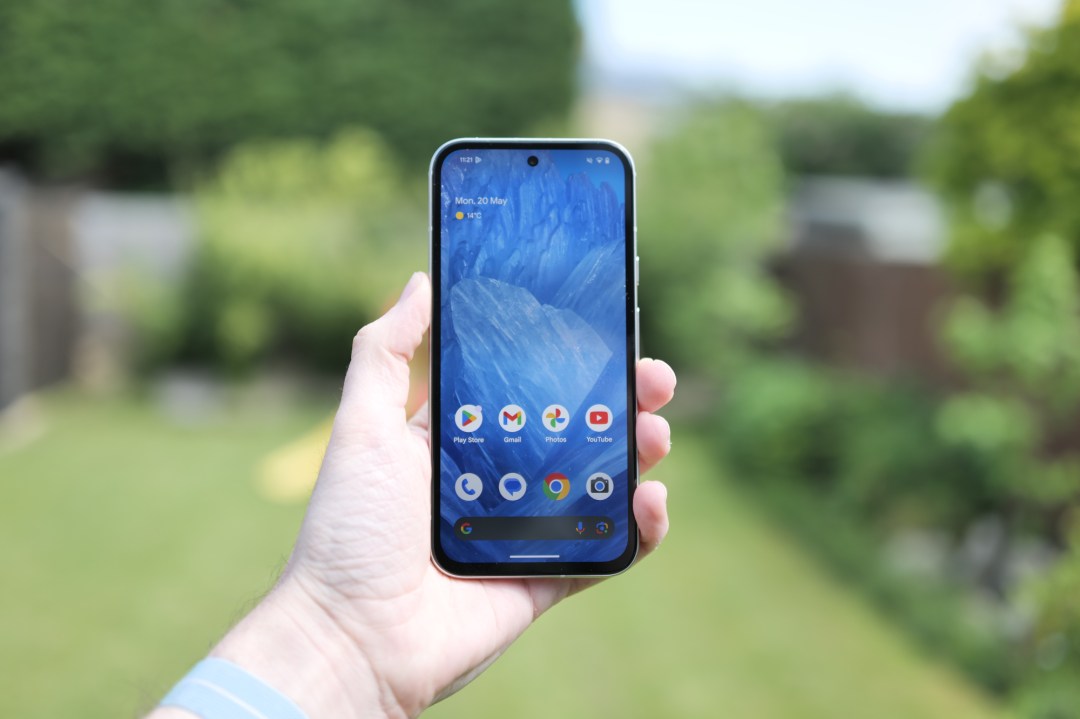
Stuff Verdict
With similar hardware to its more expensive siblings, the Pixel 8a is the cheapest way to access Google’s AI smarts. With amazing photography skills, the Pixel 8a is the mid-range smartphone to beat.
Pros
- Flagship-challenging photography skills
- Improved design over the previous generation
- Brighter screen
- Most accessible way to access Google’s AI
- Seven years of support
Cons
- Charging speeds remain behind rivals
- The Pixel 8 can be found for a similar price
- Gemini AI chatbot not available in UK and Europe
Introduction
In recent years, Google’s Pixel A-series (A standing for affordable, presumably) has dominated the market for the best mid-range smartphones. They’ve delivered outstanding value, by including many of the brand’s flagship features (think amazing cameras and slick software) and only cutting the corners you’re less likely to notice. The Google Pixel 8a continues this tradition.
Google has taken the best features of its more expensive and well-reviewed Pixel 8, and slightly scaled them back to achieve a more budget-friendly price point. The result has made me question whether you need to spend more than $500 / £500 on a smartphone.
Inside is Google’s flagship Tensor G3 chipset, as well as higher-end features such as a brighter display with a higher refresh rate, upgraded IP67 rating and a 64MP camera. It’s not just hardware that Google has focused on, however; the Pixel 8a is equipped with many of the same AI features as the Pixel 8 and Pixel 8 Pro, like Gemini, Best Take and Audio Magic Eraser.
Is the new Google Pixel 8a good enough to tempt you away from getting a flagship smartphone? Let’s take a look in more detail…
This review was originally published on 20th May 2024.
How we test smartphones
Every phone reviewed on Stuff is used as our main device throughout the testing process. We use industry-standard benchmarks and tests, as well as our own years of experience, to judge general performance, battery life, display, sound and camera image quality. Manufacturers have no visibility on reviews before they appear online, and we never accept payment to feature products.
Find out more about how we test and rate products.
Design & build: fun, fresh design
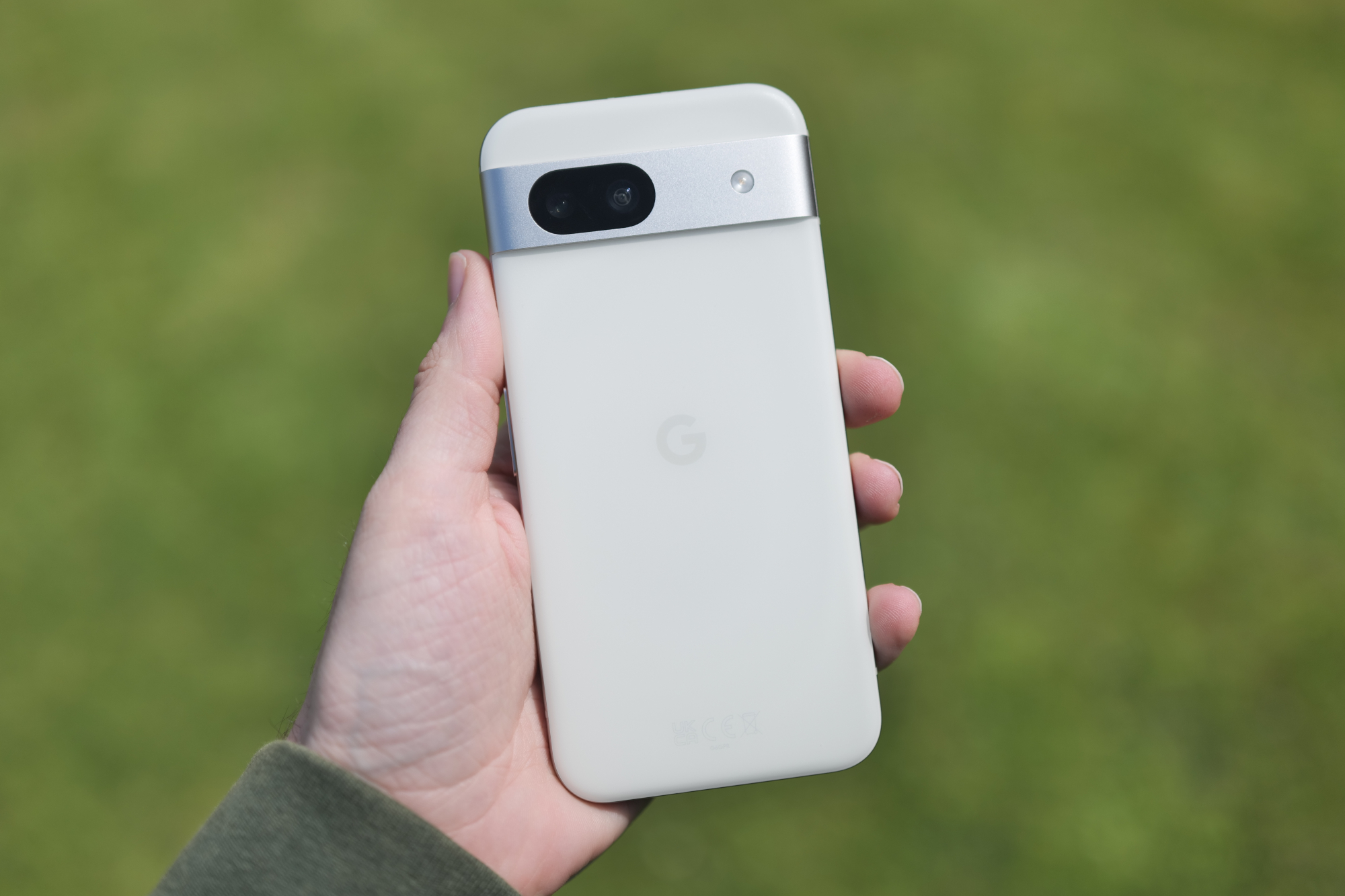
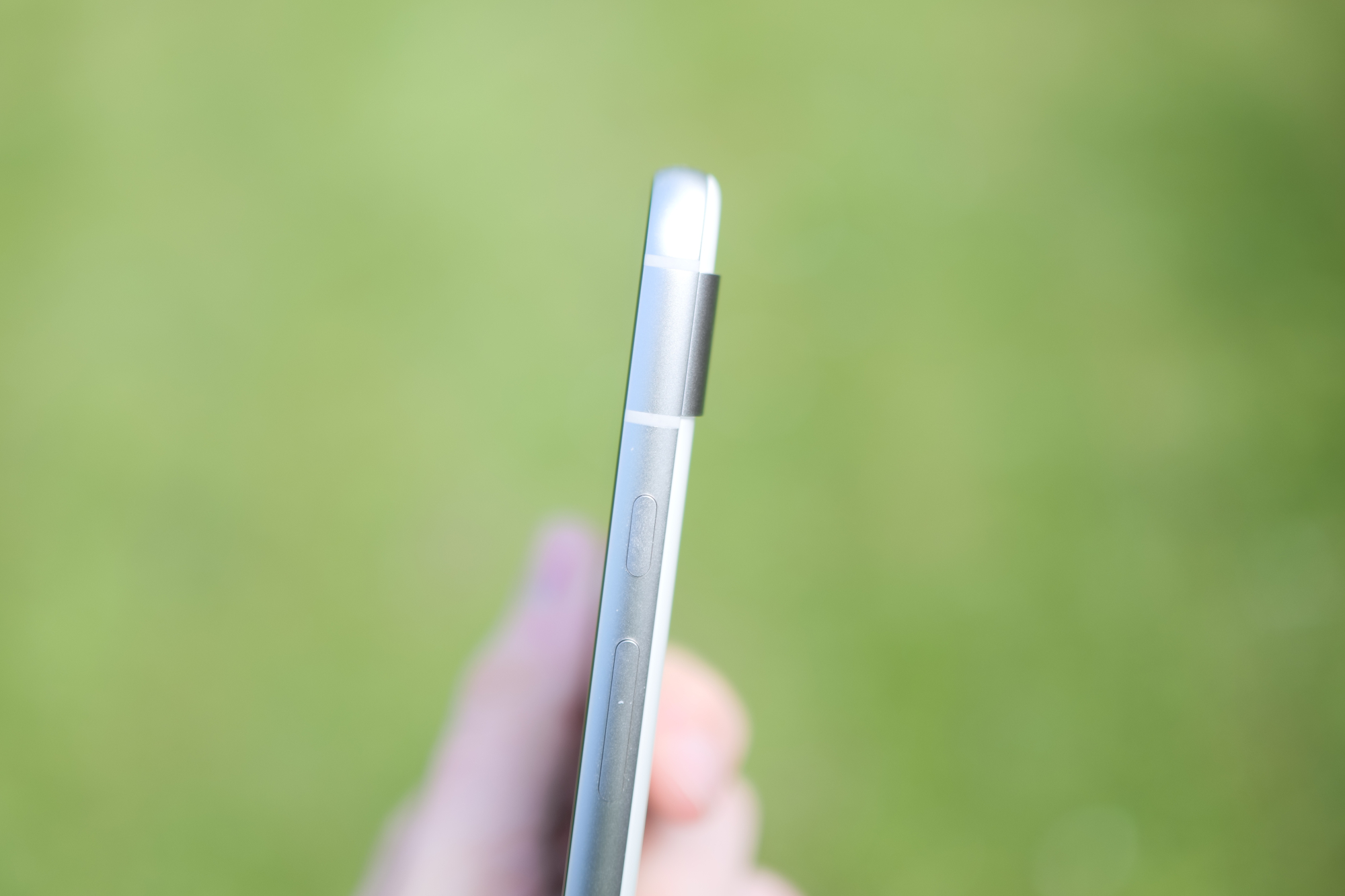
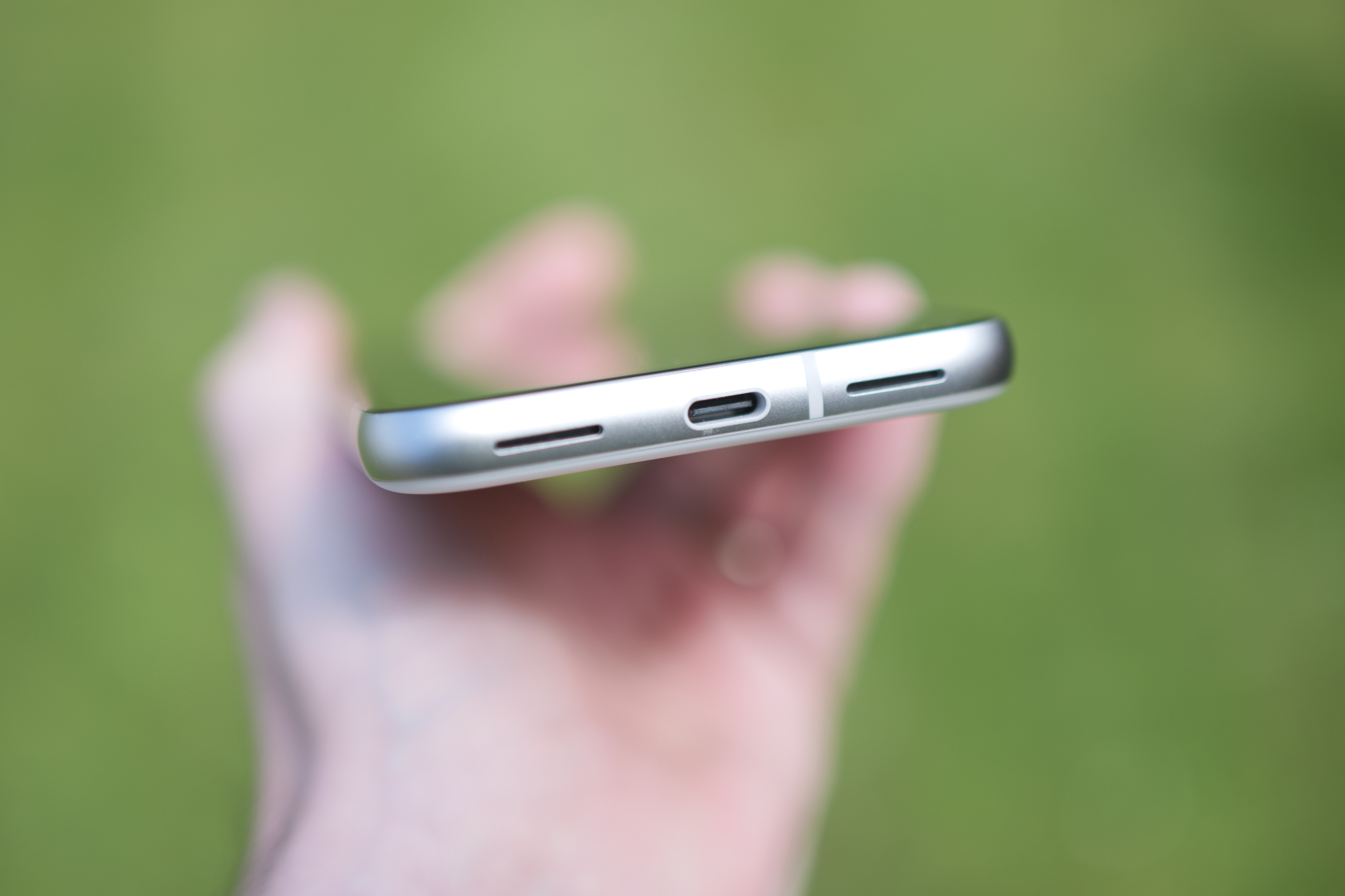
The Pixel 8a is the most refined Pixel A-Series phone yet. Compared to the Pixel 7a, the Pixel 8a feels even better in your hands with soft rounded edges, a matte back and a polished, recycled aluminium frame. The rear shell is still made from polycarbonate, but the matte finish is now less prone to fingerprints.
At first glance, it looks and feels identical to the pricier Pixel 8, but closer inspection will reveal a few key differences. For a start, the display bezels are slightly thicker, and everything is just a bit more rounded. I really like the Pixel 8a design and actually prefer it to the Pixel 8. The matte back provides more grip compared to the glossy Pixel 8, and the camera bar is slimmer and less intrusive.
As well as being more refined, the Pixel 8a is also the most durable A-Series phone yet, with an IP67 rating (meaning it can handle slips, spills and dust) and features a Gorilla Glass 3 display.
I’m reviewing the ‘Porcelain’ (AKA white) Pixel 8a, but you can also choose Obsidian (black) or two new A-series colours, Bay (blue) and Aloe (a limited-edition, mint green colour).
You have the option of face and fingerprint unlocking, though only the fingerprint can be used for banking apps and similar services. Both methods quickly recognized me, and I didn’t notice any difference between it and the more premium Pixel models.
Screen & sound: bright and beautiful
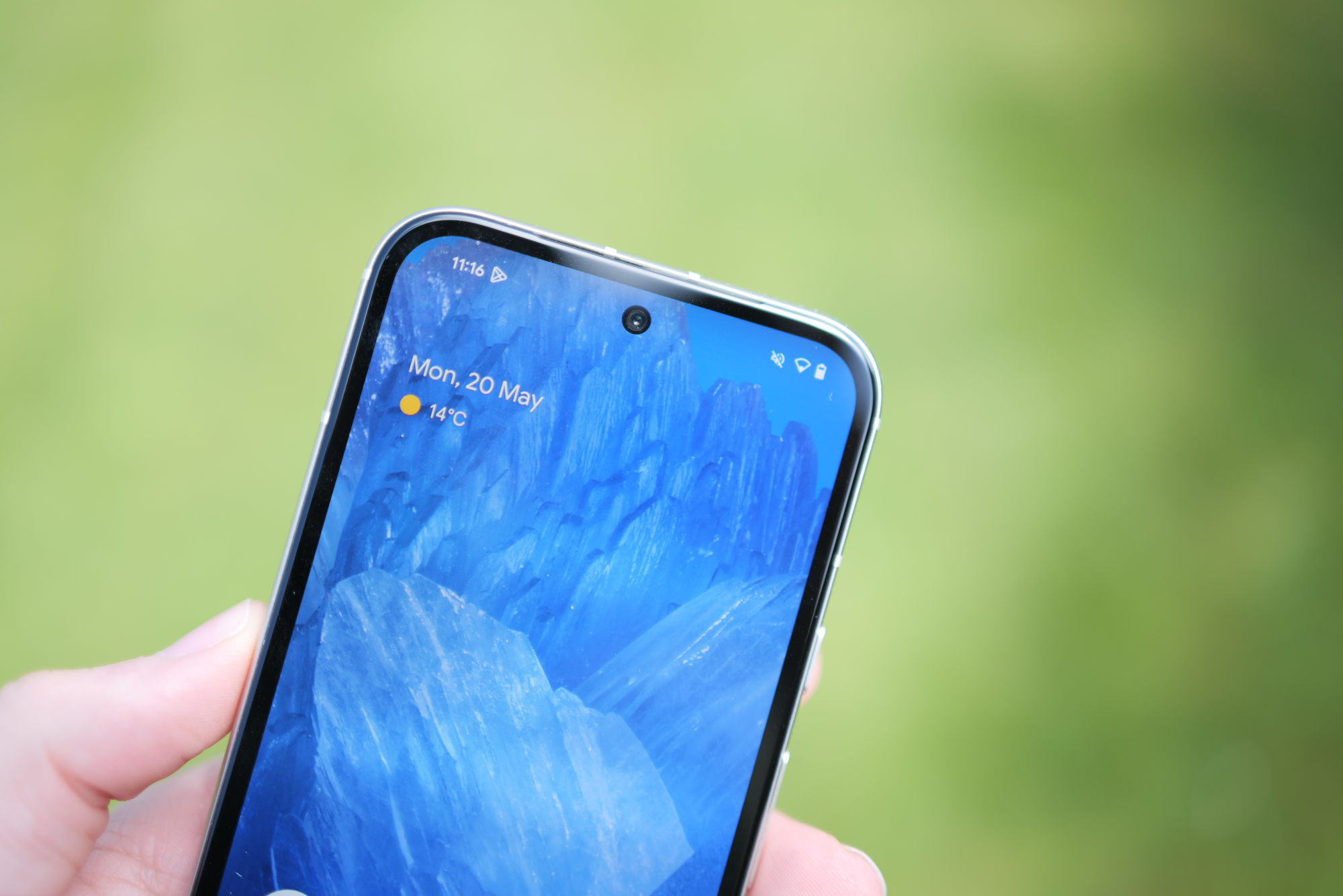
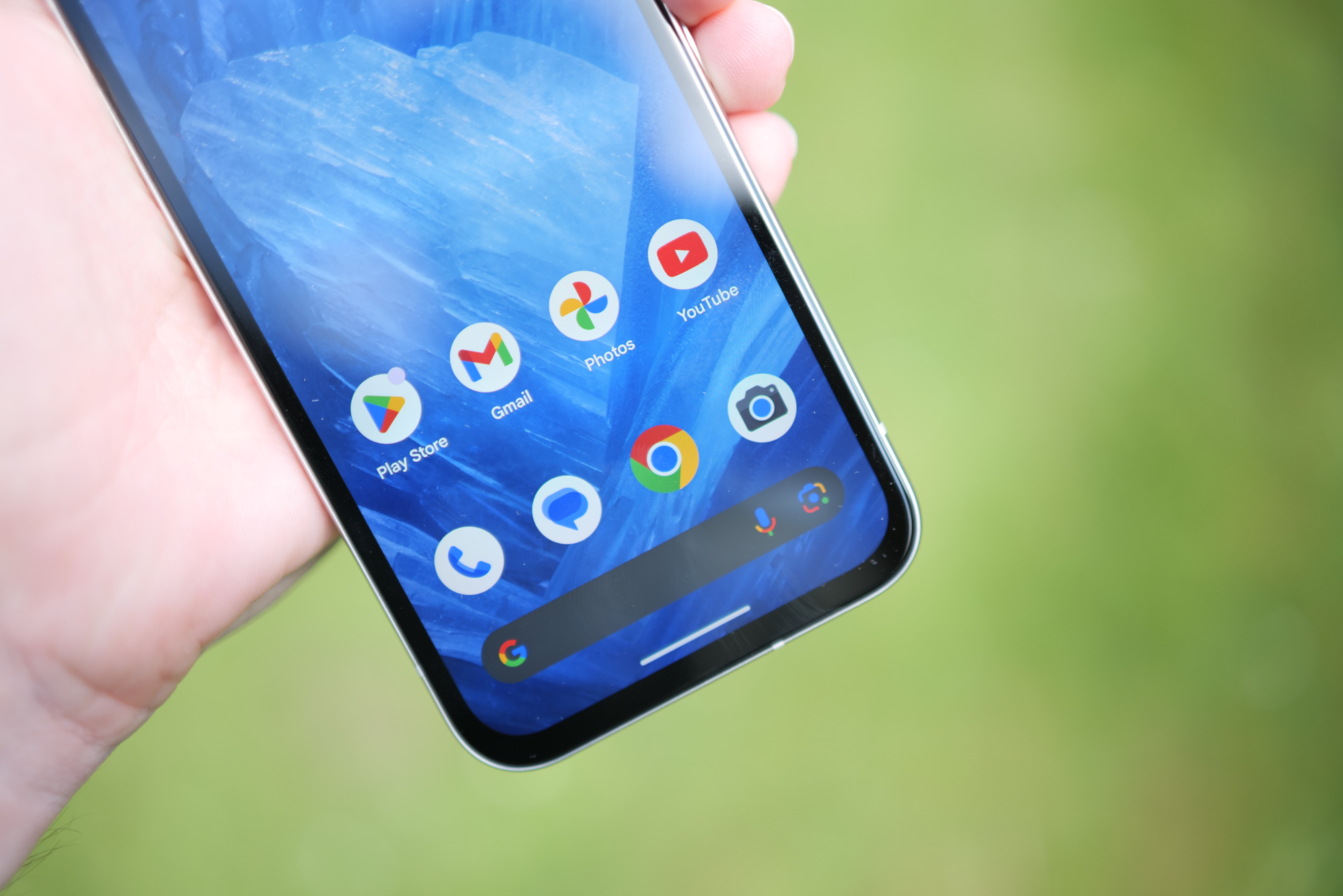
Staying relatively compact, the screen size and resolution haven’t changed from last year, meaning the Google Pixel 8a gets a 2400×1080 OLED panel stretched across 6.1in. I really appreciate that Google has resisted the urge to supersize its affordable phone.
The big upgrade here, however, is to the brightness and refresh rate. The new Actua display is 40-percent brighter than the Pixel 7a, and the refresh rate tops out at 120Hz. This is a welcome change, as it can now match its rivals, such as the Nothing Phone 2, for fluid motion. It’s also a big improvement over the Pixel 7a and its 90Hz display.
It’s worth noting you can’t force it to constantly run at 120Hz, with Google dynamically switching between 60 and 120Hz depending what’s onscreen. It’s also disabled by default, which means you need a trip to the Settings menu to turn it on. But I think the smoothness of every swipe and scroll makes the minor hit to battery life worth it.
Deep blacks and vibrant colours are standard for an OLED panel, and the Pixel 8a makes no exception. It’s a lovely display to look at, with both still images and videos looking punchy, yet true to life.
Personally, I find the default setting feels a little too saturated, so opt for the Natural colour preset which tones it down a bit. Whichever profile you opt for, you’ll get a sharp, saturated, and well-defined image.
As previously mentioned, the screen is noticeably brighter than the previous model. While previous A-series Pixel phones couldn’t match the brightness of more expensive models, the Pixel 8a matches the same 2000 nits peak brightness as the Pixel 8. It’s clear to use in direct sunlight and has excellent viewing angles.
The Pixel 8a’s stereo speakers do a decent enough job for general podcast listening or YouTube playback. The down-firing driver and earpiece tweeter don’t produce any real bass, but the vocals are clear and I found the volume to be ample. If you want a more personal listening experience you’ll have to opt for Bluetooth headphones, as there is no 3.5mm headphone port here.
Cameras: point-and-shoot
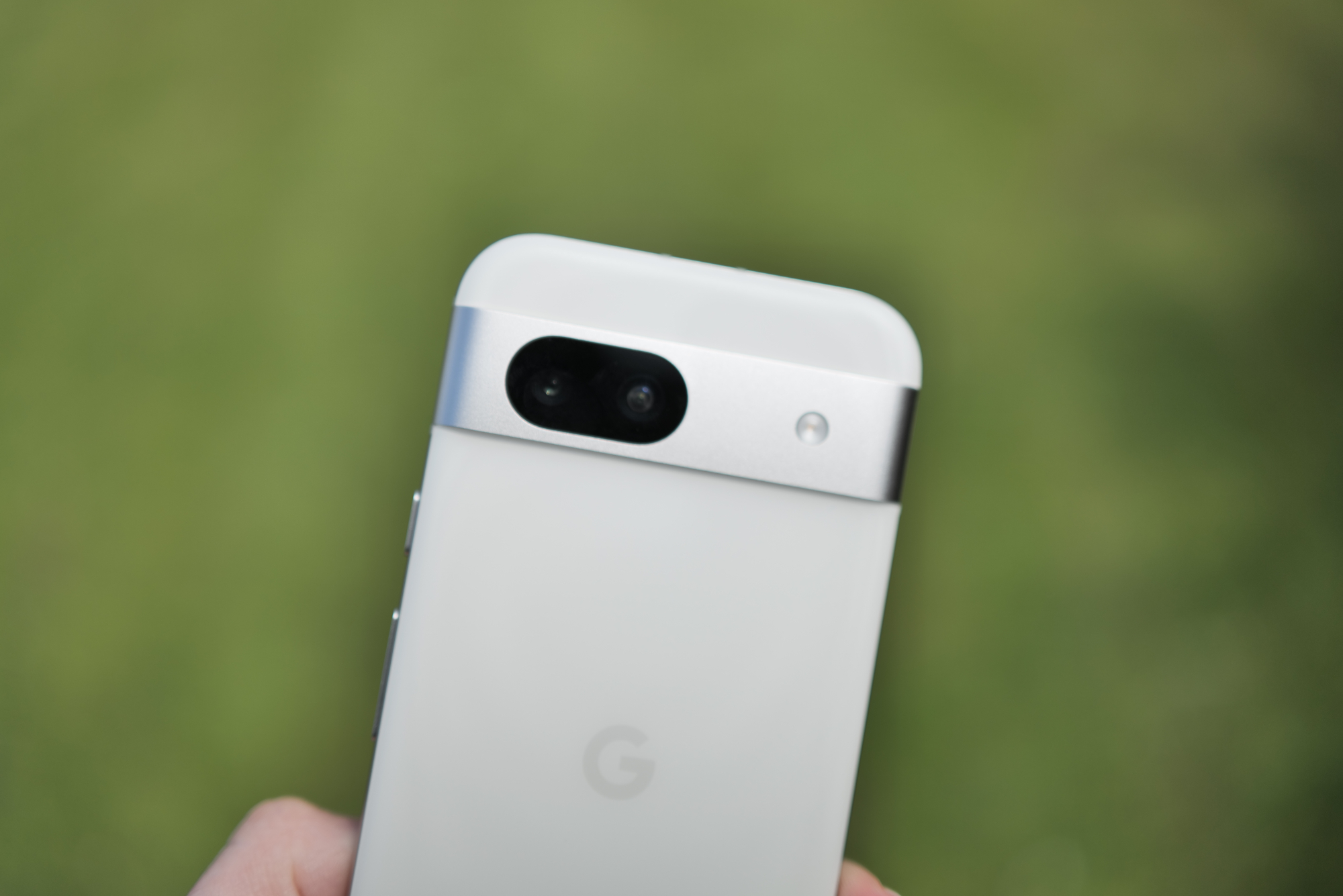
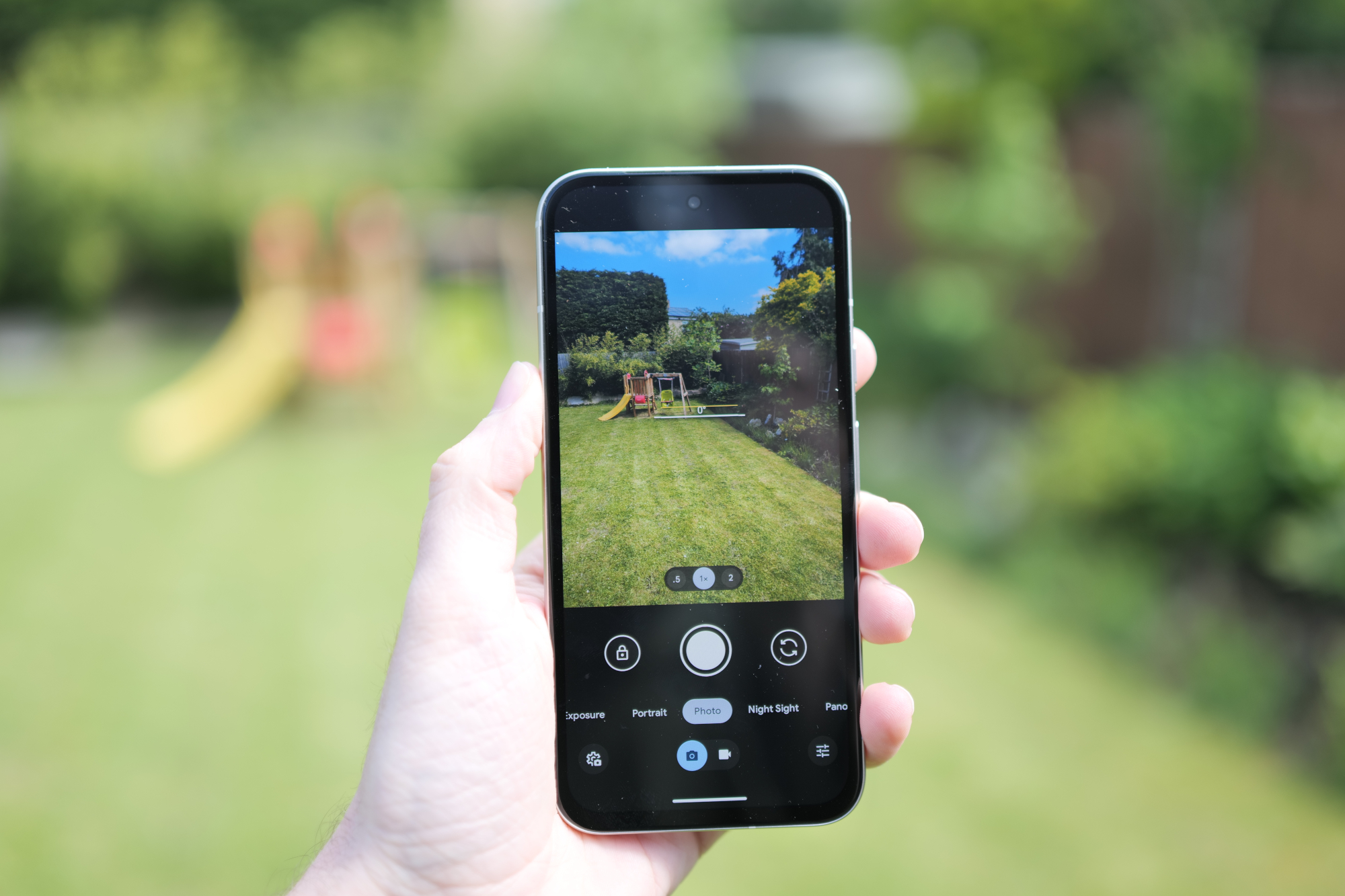
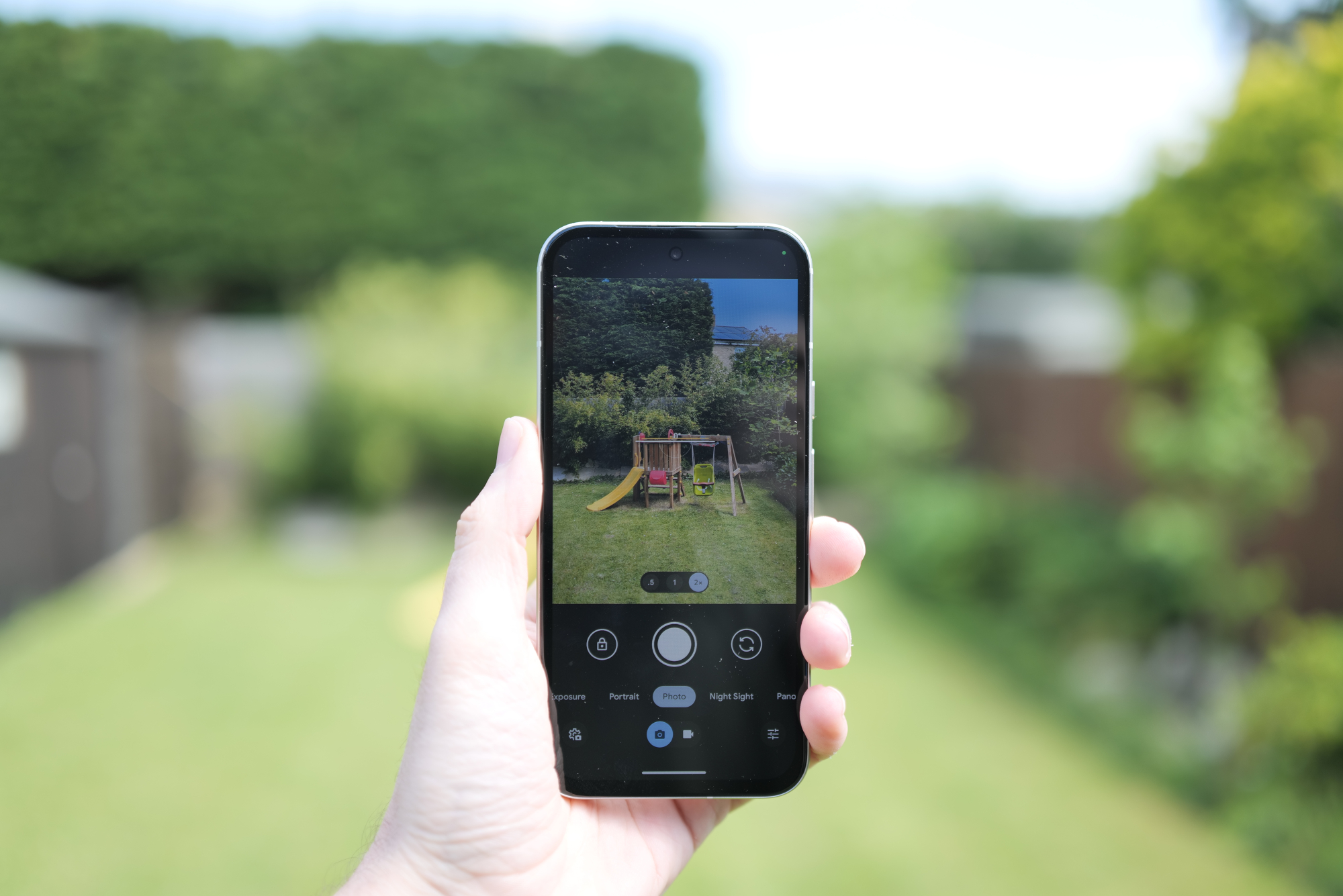
Last year Google gave the Pixel 7a the same 64MP main snapper as the Pixel 7 and Pixel 7 Pro. It had a significantly higher pixel count than the Pixel 6a and the sensor was physically larger as well (meaning it could capture more light). For the Pixel 8a, Google has decided to stick with this great sensor.
The images taken in the phone are downsampled to 16MP, but the big draw of Pixel phones is that you get Google’s superb image processing algorithms perfecting each image before you get a chance to see the finished shot.
I am constantly amazed at how good the more affordable Pixel phones are when it comes to photography. The amount of detail in the images is really impressive, with Google nailing both close-up and distance shots. In my opinion, this is the best camera phone you can get for under $500/£500.
Google’s processing is consistent across all Pixel phones, so with the 8a, you’ll still get the trademark heavy shadows and a more natural colour balance when compared to either Samsung or Apple. I think the resulting images are very dynamic and close to what your eyes actually see. Exposure, noise, and dynamic range are all handled very well, creating a balanced, pleasing image to look at.
Skin tones remain very well judged thanks to the firm’s Real Tone skin tone mapping, and autofocus was always quick to pick out my subjects. As a point-and-shoot experience, I don’t think it can be beaten.
Night Sight kicks in automatically in very low light, and while it still needs a second or two of steady hands for the sharpest shots, the detail is very impressive and the noise is kept to a minimum.


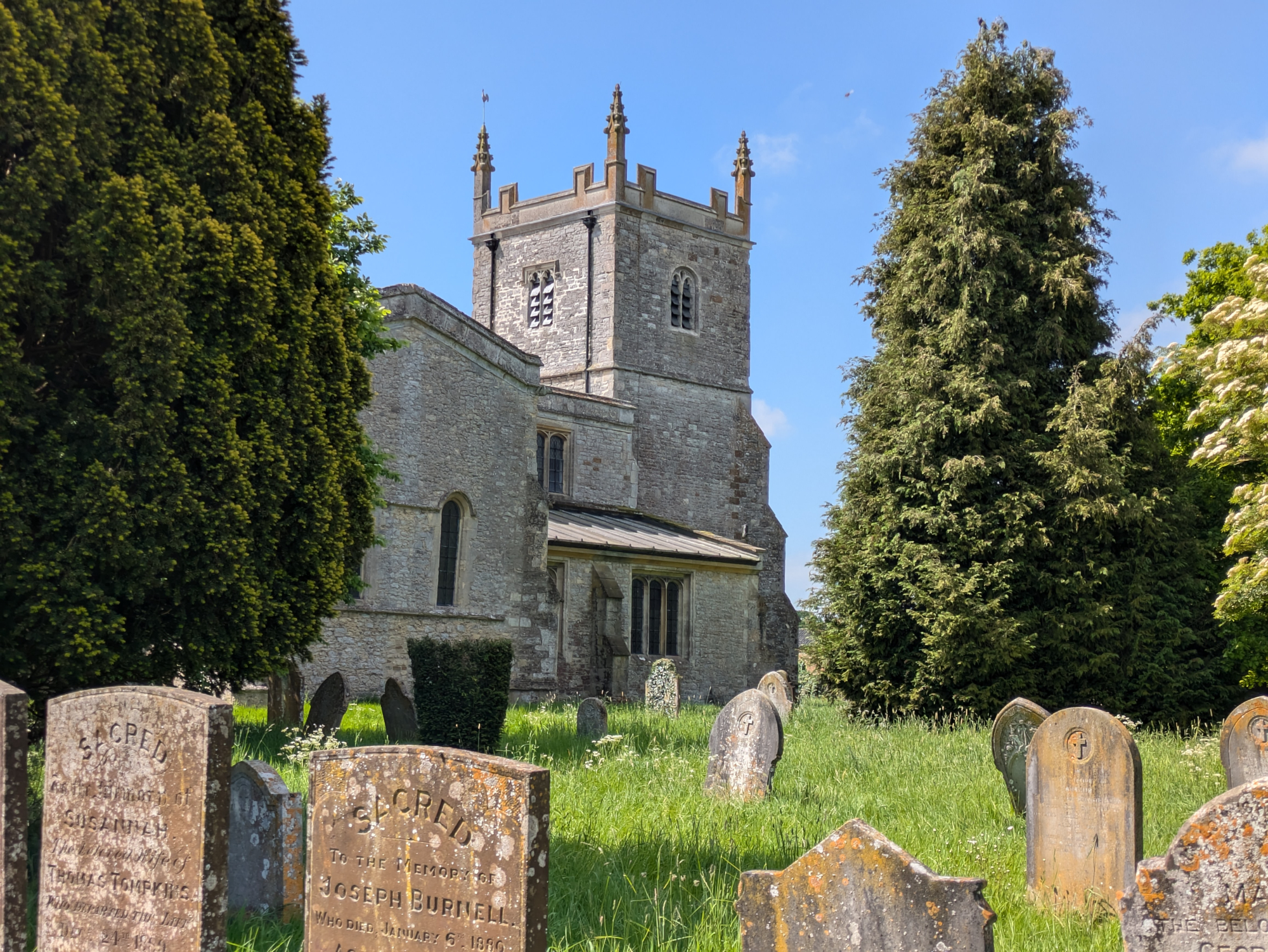

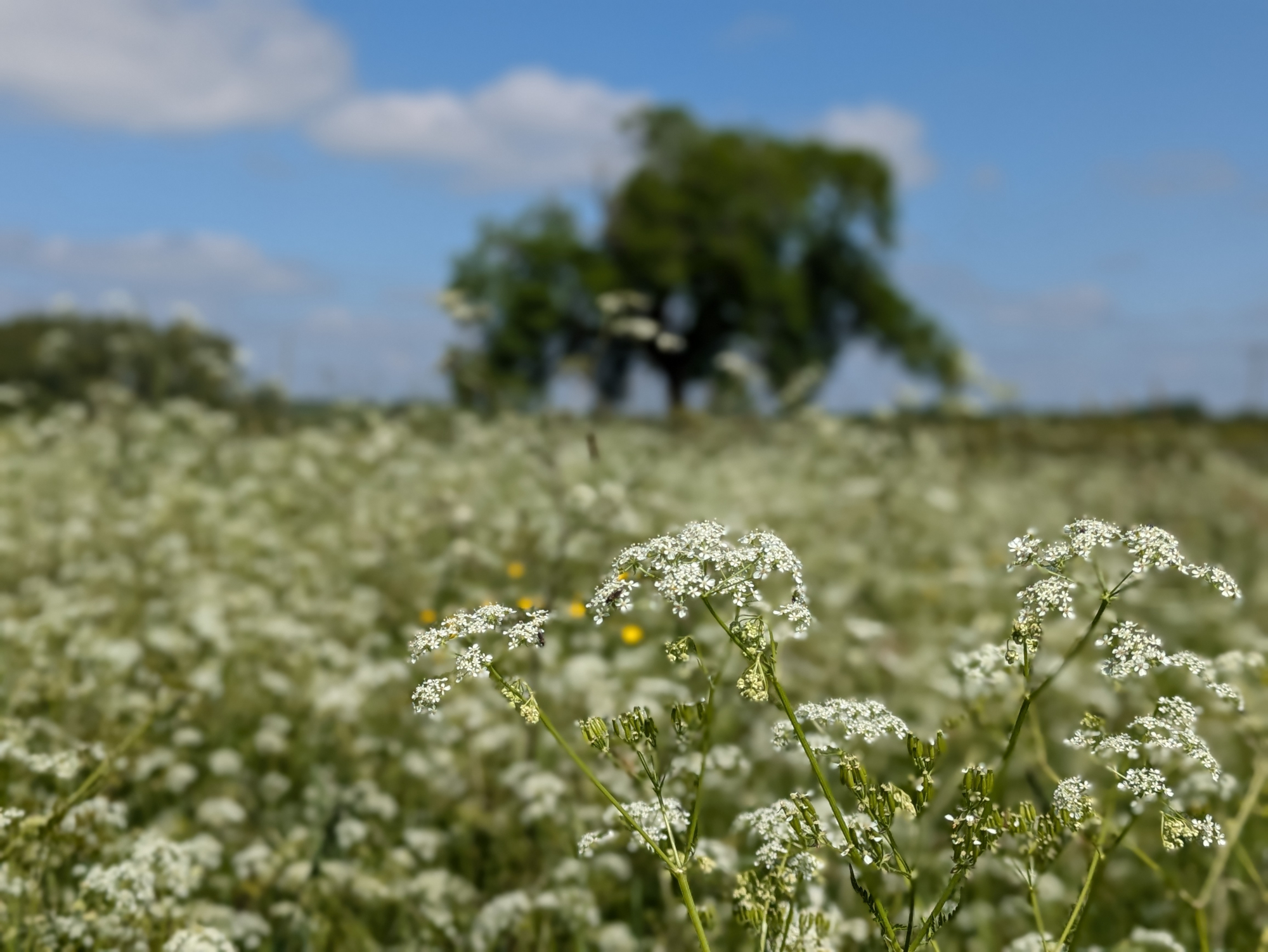

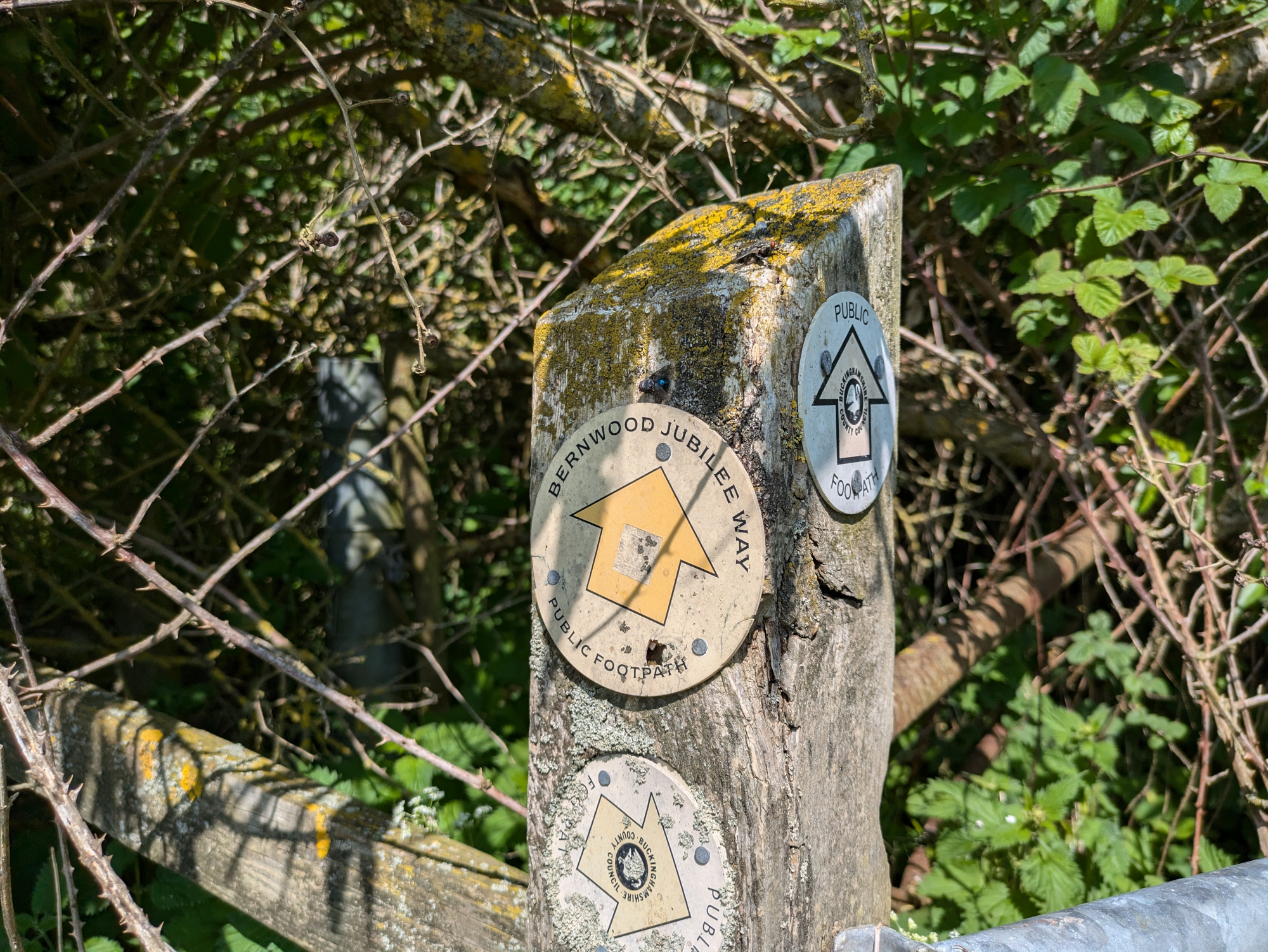
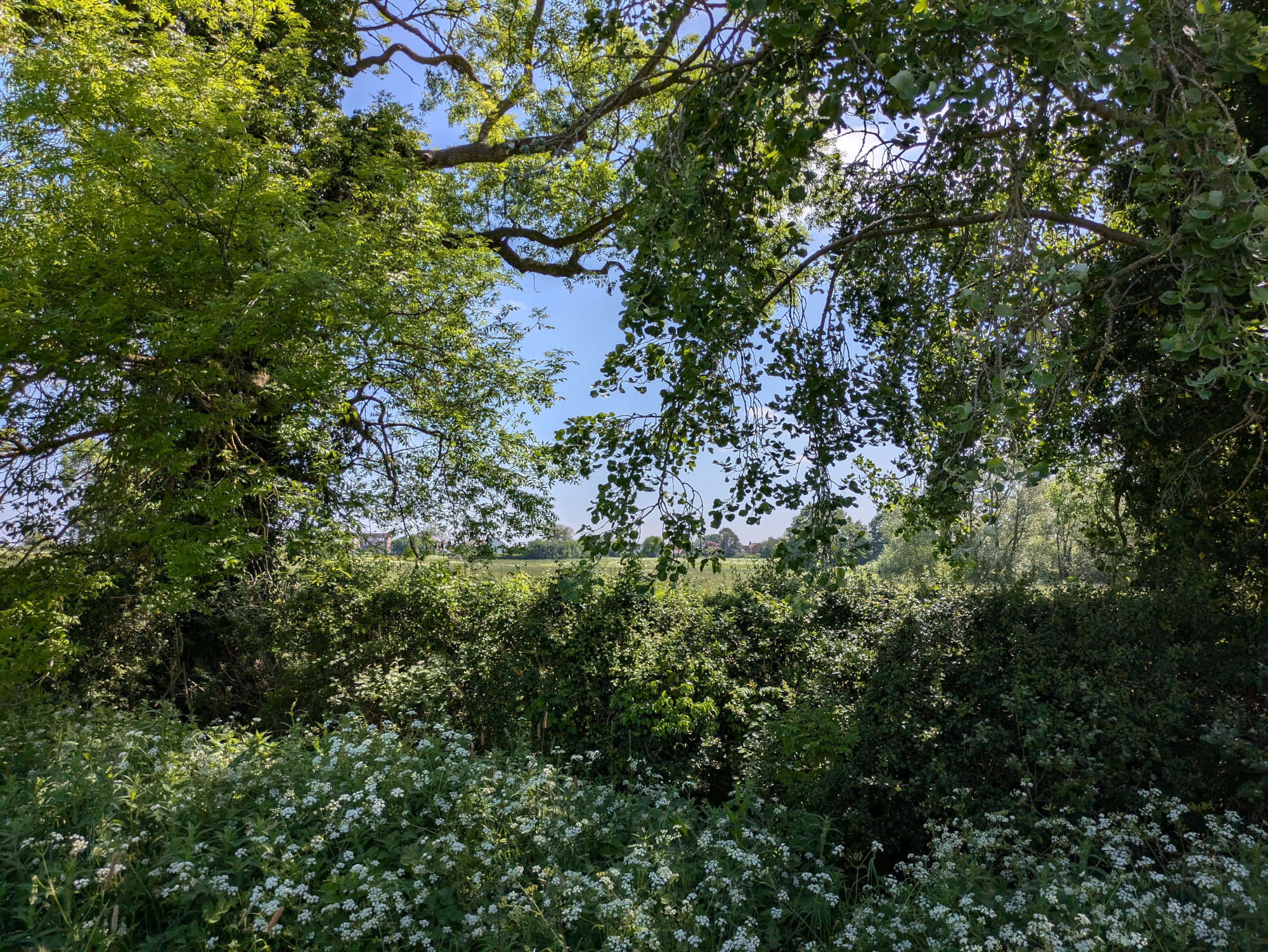
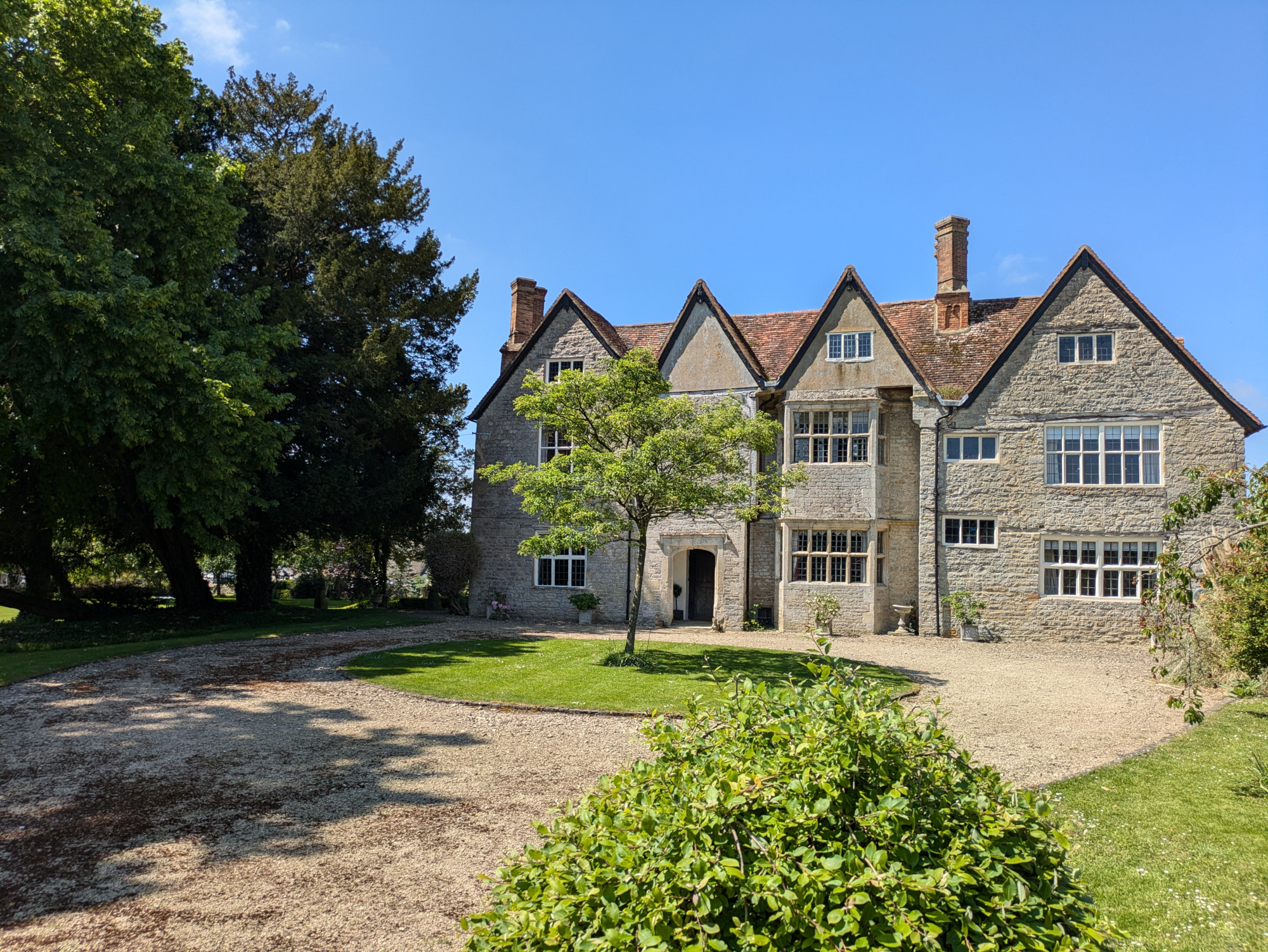
The main camera is paired with a 13MP ultrawide lens, which misses out on the Macro Focus close-up abilities of the pricier Pixel 8. Once again, colour balance, dynamic range, and exposure are very closely matched, and the level of detail is impressive. There’s some softening and distortion at the edges, but really, it’s another area where the Pixel 8a outperforms its rivals.
Unsurprisingly, there is no dedicated telephoto lens, but Google’s Super Res zoom adds up to 8x magnification using software tricks. While these images don’t fare as well under close scrutiny, they remain perfectly usable between 2x and 4x zoom.


Finally, the 13MP selfie camera is also identical to the Pixel 7a. In good lighting conditions, the shots captured by the Pixel 7a’s front-facing camera are detailed, colourful, and devoid of noise, with only a minor step-down in quality once indoors. It excels in capturing finer facial details, and its dynamic range is quite respectable.
The real game changer when it comes to Pixel photography is the addition of Google’s AI-powered editing tools enabled by the G3 chip. These include features like Best Take, which lets you choose the best expression for everyone in a group shot, and Magic Editor, which lets you reposition and resize subjects. I find them really user-friendly in use, and think it’s great they’re now available at a more accessible price point.
Software experience: AI everywhere
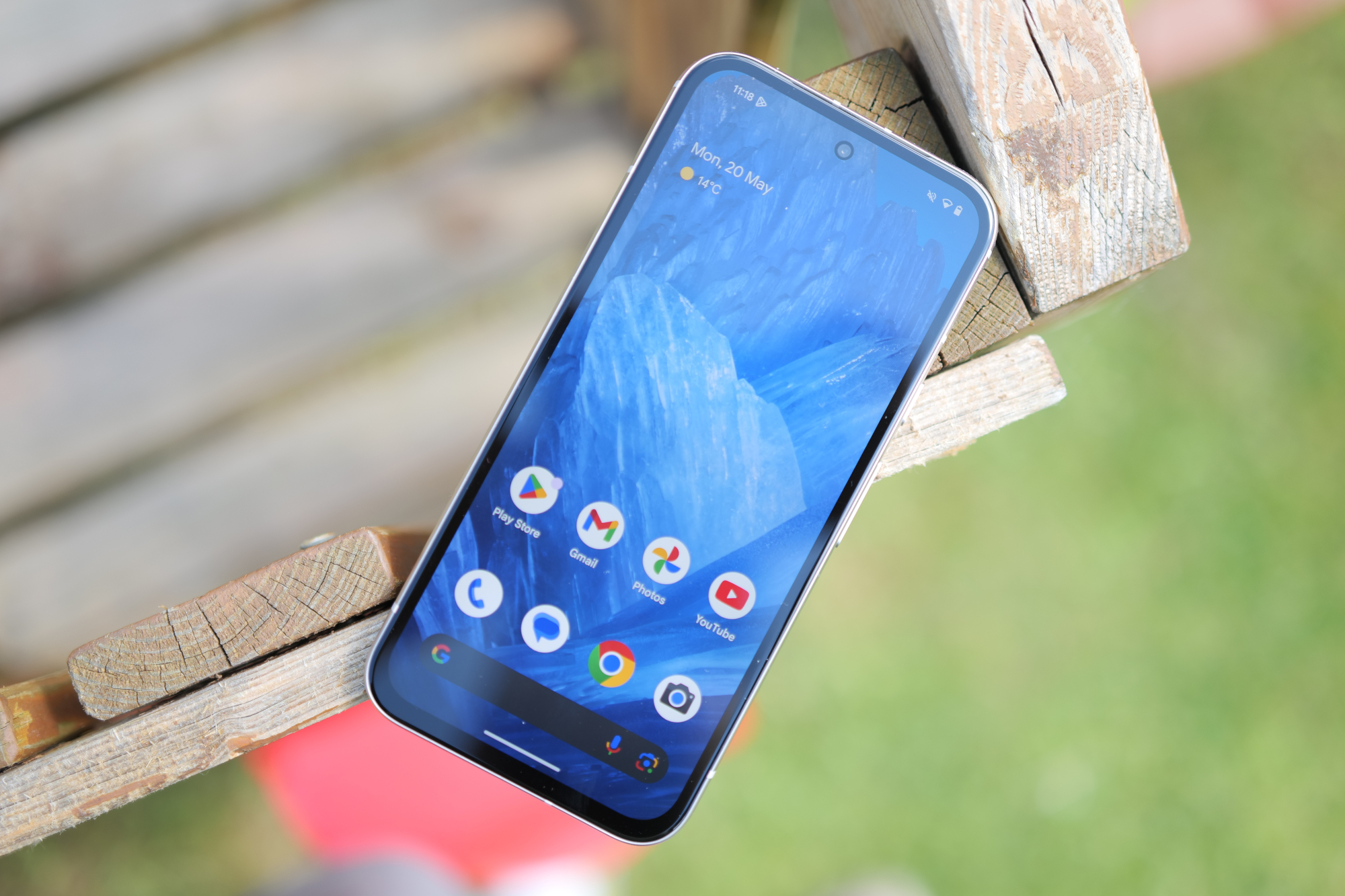
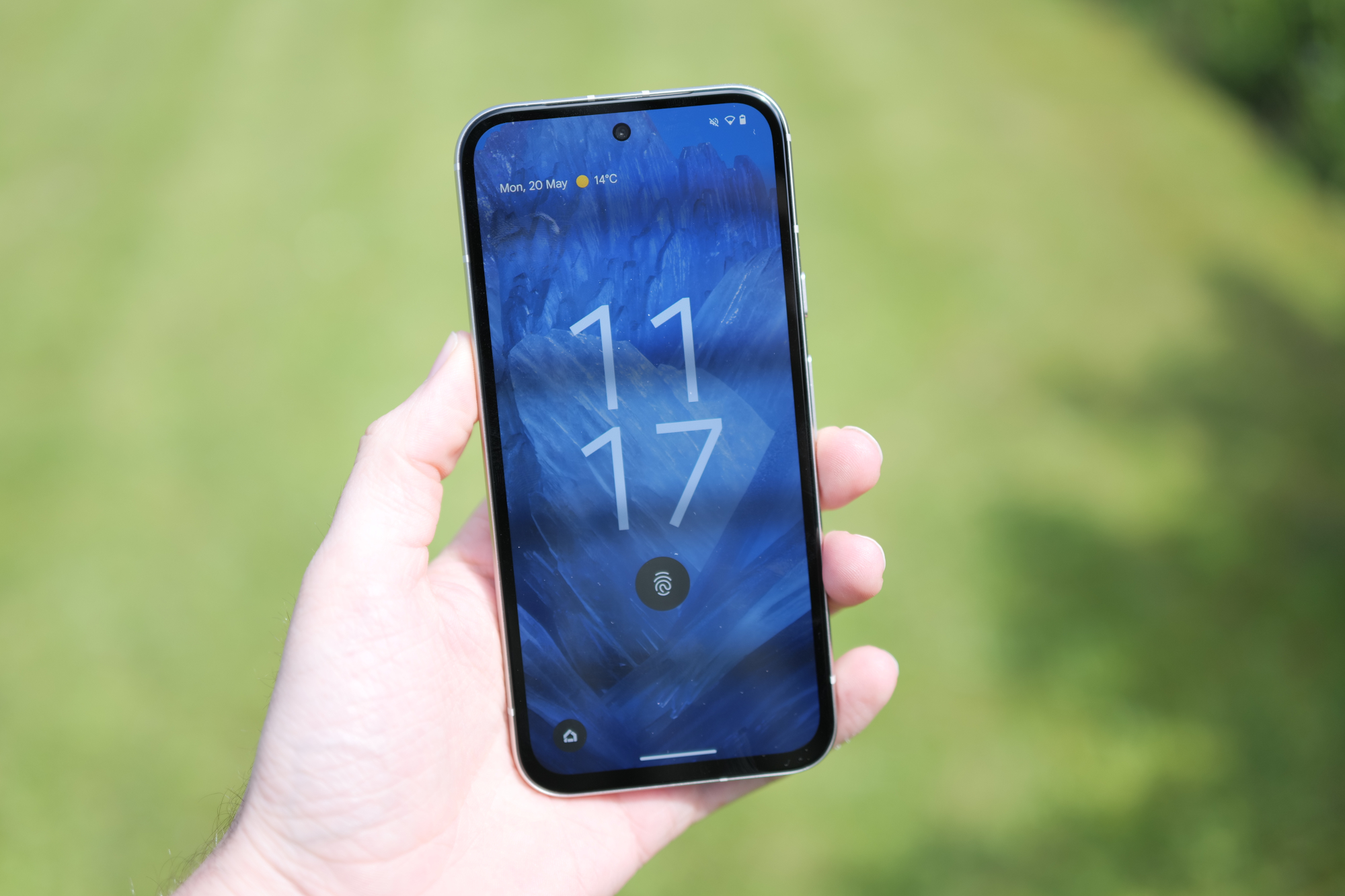
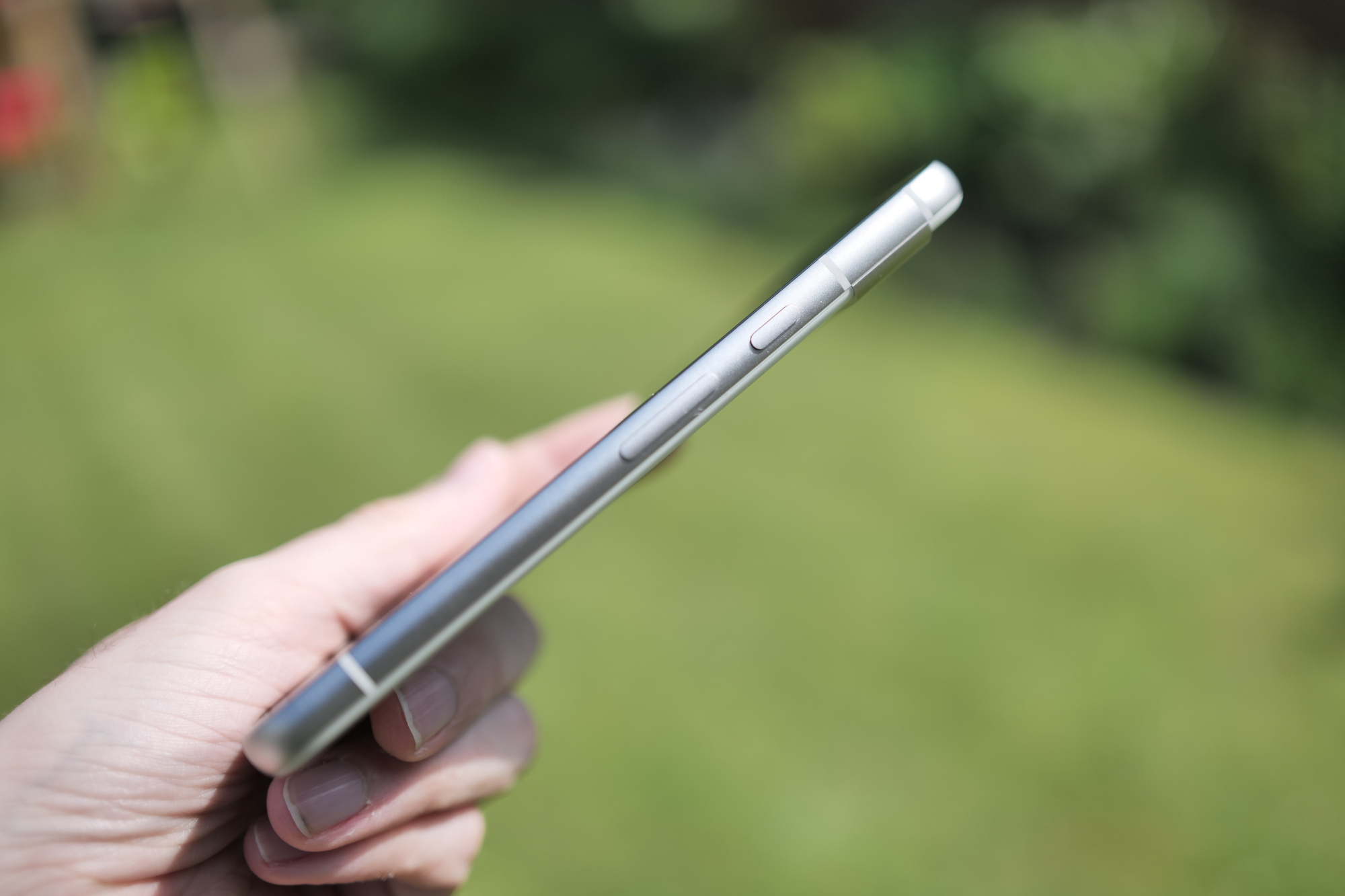
The Pixel 8a inherits Google’s Tensor G3 CPU from its bigger brothers, meaning this mid-range phone has the firepower of a full-on flagship. Android feels perfectly responsive, swiftly opening apps and smoothly handling split-screen multitasking. With 8GB of RAM, it excels at multitasking, while Google’s custom Titan M2 chip ensures robust hardware-level security. While most Snapdragon 8 Gen 3-powered phones outperform the Pixel 8a in benchmarks, unless you’re deeply concerned about having the fastest phone available, you’re unlikely to notice a significant difference.
The entry-level Pixel 8a comes with 128GB of storage, which is about what I’d expect for the cash, but for the first time, Google now also offers a 256GB version. This addresses a gripe we had with previous A-series phones. If that’s still not enough, buyers qualify for discounted Google One cloud storage.
The Pixel 8a dropped with Android 14 on board, and will naturally be among the first in line for Android 15 once Google releases that version to the public. If you feel the need to have the latest software available, a Pixel remains your best bet.
Adding to this, Google has promised at least seven years of security patches, which is outstanding if you’re shopping for a long-term handset. You’ll also get semi-regular Feature Drops like the rest of the Pixel line-up.
Of course, being a Pixel phone, the 8a doesn’t have any pre-installed bloat, just a full selection of Google-made apps, and the interface is just as Google intended. It’s simple to navigate and looks great in my eyes.
The big story this year is AI. The Pixel 8a is packed full of features to make your life easier. From Circle to Search to the At a Glance widget, both of which are neat little additions to make this affordable phone more practical.
Two notable additions are the AI-powered Pixel Call Assist features (like Call Screen, Direct My Call, Hold for Me, and Clear Calling), as well as the introduction of Audio Emojis, which aim to make your phone calls more expressive and engaging. Just tap on an emoji to trigger an audio reaction and visual effect – I like to use the laughing emoji after telling a joke, because I’m deeply insecure.
In the US, Pixel 8a users can access Google’s Gemini AI chatbot, but that’s currently unavailable in the UK and Europe.
Performance & battery life: business as usual
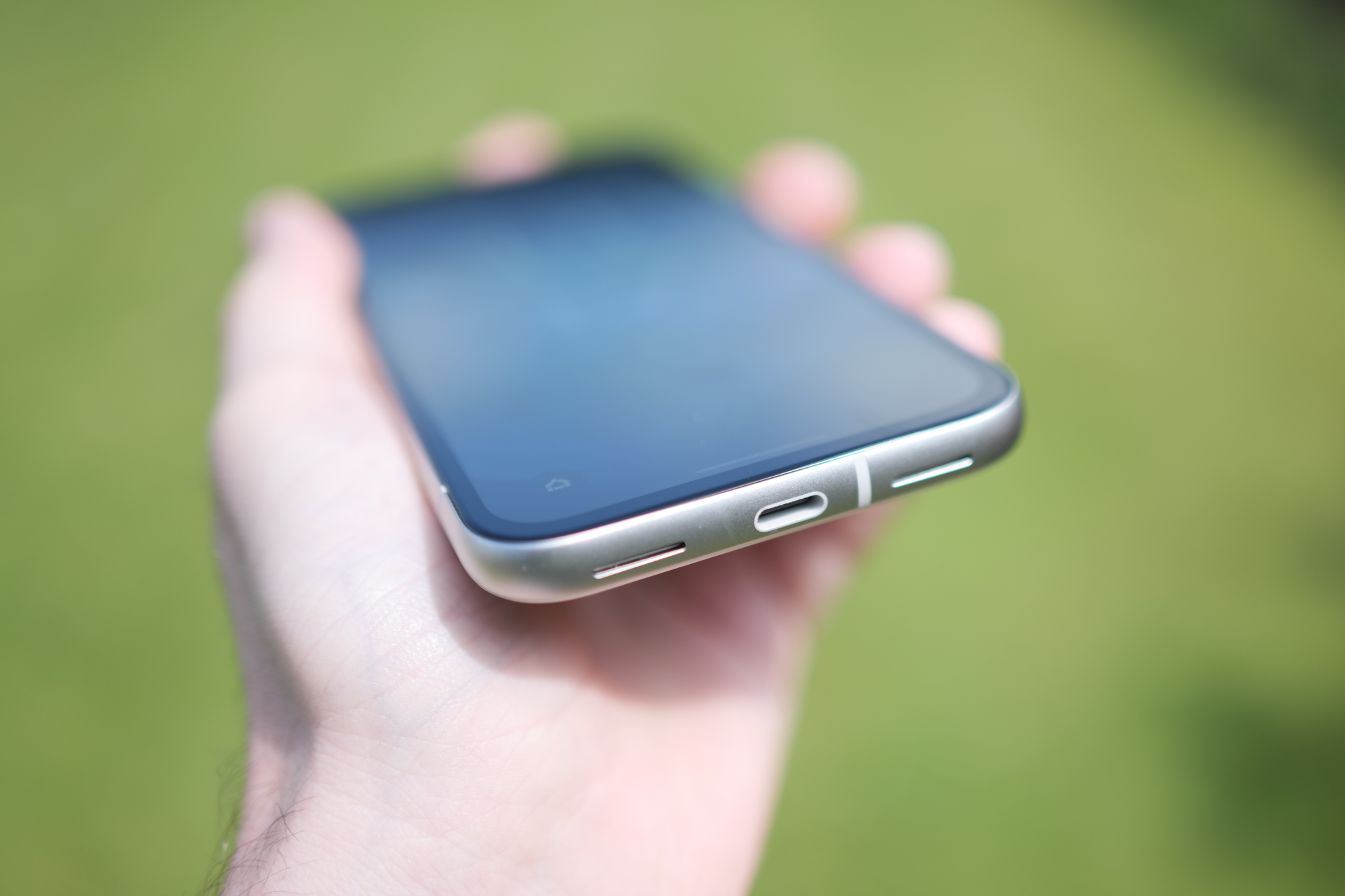
Pixel phones aren’t really known for their battery endurance, and the Pixel 8a doesn’t change that. With a 4492mAh battery, the Pixel 8a squeezes in a few more cells than the outgoing 7a, but in reality the difference will be negligible.
Google estimates a 24+ hour battery life which is achievable if you’re at home or in the office all day barely using your phone, but if you’re streaming music, using Google Maps, and doom-scrolling on a train, I’ve found you’ll probably need a battery top-up in the evening/overnight.
Extreme battery saver can get you out of a pinch by pausing everything except critical apps, boosting standby time to as much as three days. But this limits you to only using your phone for calls or texts while it’s enabled.
When it does come to charging, you’ll be doing it at 18W when plugged in, or 7.5W wireless. We said this in our Pixel 7a review, but this is the bare minimum for a modern phone and means it’ll take multiple hours to fully refuel the battery. It’s not outstandingly bad, but it’s not particularly great either. Chinese alternatives like the Redmi Note 13 Pro+ remain leagues ahead here.
Google Pixel 8a verdict
With swift performance, sleek AI-powered software, and outstanding camera capabilities for its price, the Google Pixel 8a once again dominates the affordable smartphone market. It proves that you don’t need to spend over $500/£500 to get an excellent smartphone anymore. Its upgraded design and brighter screen give it the look and feel of a more expensive handset, pushing rival smartphone makers to catch up. When compared to the likes of the Samsung Galaxy A55 and Nothing Phone 2, there really is no competition.
To increase the value proposition even further, Google will support this phone for seven years, which is very commendable in my eyes.
Okay, the charging speeds remain slightly behind rivals, and not all AI features are available to buyers in the UK and Europe, but unless you’re willing to spend nearly double the money on a flagship with even more versatile cameras, the Pixel 8a is everything you’ll ever need.
Stuff Says…
With similar hardware to its more expensive siblings, the Pixel 8a is the most affordable way to access Google’s AI smarts. Paired with amazing photography skills, the Pixel 8a is the mid-range smartphone to beat.
Pros
Flagship-challenging photography skills
Improved design over the previous generation
Brighter screen
Most accessible way to access Google’s AI
Seven years of support
Cons
Charging speeds remain behind rivals
The Pixel 8 can be found for a similar price
Gemini AI chatbot not available in UK and Europe
Google Pixel 8a technical specifications
| Screen | 6.1in 1080 x 2400 OLED up to 120 Hz |
| CPU | Google Tensor G3 |
| Memory | 8GB RAM |
| Cameras | 64MP, f/1.9 main w/ OIS + 13MP,f/2.2 ultrawide rear 13MP, f/2.2 front |
| Storage | 128 GB/256 GB |
| Operating system | Android 14 |
| Battery | 4,492 mAh w/ 18W wired, 7.5W wireless charging |
| Dimensions | 152.1 x 72.7 x 8.9mm, 188 g |
